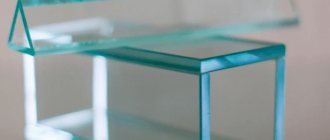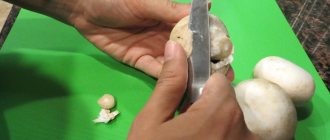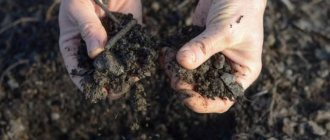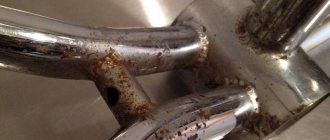Not all types of adhesives are suitable for repair, restoration and installation of plastic elements. Plastic polymers can melt, change their structure, color, or crumble under the influence of chemical compounds. In order not to damage the base and ensure a high level of fixation, you need to choose the right composition for each type of material.
How to glue plastic without seams?
Dichloroethane. The most popular method of gluing without a seam. After the glue dries, the gluing area will be extremely strong and even with a strong impact, the gluing area will remain undamaged.
Interesting materials:
What is the Silver Age famous for? What is Agatha Christie famous for? What is Yana Koshkina famous for? What did Churchill teach Charlie Chaplin? What is the approximate speed of light in vacuum? What is cos (- 120 *)? What is the thermal effect of a chemical reaction? What is the charge on the nucleus of a silicon atom? What is the concentration? What is the measure of length arshin?
Cyanoacrylate glue, the most popular
Cyanoacrylate, more commonly known as “superglue” or second glue, is the best all-purpose adhesive for plastic. It's not the most durable, as it's brittle once cured and therefore doesn't last long, but it should be sufficient for most applications.
This glue is universal and has a short setting time. It comes in liquid and gel consistency, making it ideal for both filling cracks and small chips. The seam between the parts is very thin.
Surface preparation: sand, clean and degrease the surfaces to be bonded.
Safety: Use in a ventilated area, keep away from skin and foreign objects.
Suitable for PLA, ABS, PETG, SBS, does not work well with nylon, TPU and photopolymers
Pros:
- high curing speed - at room temperature, literally within a few seconds;
- high reliability of the connection - often the adhesive seam is stronger than the material being joined;
- the ability to combine materials of different structures;
- ease of use;
- the ability to connect inclined, vertical, porous and absorbent surfaces;
- vibration resistance and peel strength;
- aesthetic invisible adhesive seams.
Minuses:
- limited use with large gaps;
- temperature restrictions - no more than 80-100 degrees Celsius;
- the rigidity of the connecting seam, i.e. inapplicability for connections experiencing fracture loads;
- inapplicability for joining silicones, polypropylene, polyethylene and Teflon.
- fragility of the connecting seam
Superglue softens from dimethyl sulfoxide and also dissolves under the influence of heptane, acetone and isopropanol. Nevertheless, today it is one of the most popular adhesives in everyday life and easy to use.
Marking of adhesives
In addition to plastic, glue for plastic is marked with symbols, although this designation rarely coincides with the recycling marking symbols. To know how to glue plastics together, the following letters are written on the adhesives to designate the materials being glued:
- polycarbonate - PC;
- acrylonitrile copolymer - ABS;
- polypropylene - PP;
- organic glass - PMMA;
- polyethylene - PE;
- polyvinyl chloride - PVC;
- polystyrene - PS;
- polyamide - RA 66;
- polyurethane - PUR.
Often it makes no sense to look for the markings on the glue packaging; it is enough to study the instructions in Russian, which clearly explain what types of materials the glue is intended for and how to glue the plastic.
Epoxy adhesives, high strength
Usually these are two-component formulations, one bottle contains epoxy resin and the other contains a hardener.
Advantages:
- Resistance to aggressive chemicals, including oils, gasoline, non-concentrated acids and alkalis. Detergents and other household chemicals do not destroy the seam.
- Heat resistance. Tolerates temperature increases up to +250 C.
- Elasticity. Small displacements of glued fragments, drilling and grinding of the seam are possible.
- Completely waterproof.
- Good adhesion to various materials, including plastics, wood, cement, drywall, etc.
- Resistant to shrinkage and cracking.
- High seam strength.
Epoxy adhesives also have some disadvantages. The mixture cannot be selected to work with nickel, polyethylene, zinc, silicone, chromium and Teflon. It is prohibited to glue objects that come into contact with products with such compounds. Another disadvantage is the high speed of hardening, so you must work very quickly and accurately, otherwise it will be impossible to correct possible flaws. After hardening, such glue is very difficult to remove from the surface; all elements that have been stained must be thoroughly cleaned with a solvent (isopropyl alcohol is best) while the glue has a liquid consistency. In general, it is somewhat more difficult to work with than other types of adhesives.
After setting, the seam can be sanded and painted.
Surface preparation: sand, clean and degrease the surfaces to be bonded.
Suitable for: PLA, ABS, PETG, TPU, nylon, perfect for photopolymers and other resins DLP, LCD, SLA 3D printers.
The easiest way is immersion processing
Very simple and fast processing, one printout takes no more than 3 minutes. We immersed Yoda in dichloromethane for 1-5 seconds, and over the next 1-2 minutes the solvent completely evaporated from the surface. To make a glossy surface, dip the part into the solvent for the last time for 0.5 seconds, it will not have time to be absorbed and will immediately evaporate, a candy-like gloss is guaranteed.
Very quickly, no need for a bath, no need for acetone. Dichloromethane is universal for PLA, ABS, HIPS, and possibly many other exotic materials. A liter lasts a long time. The tightness of the container for storing the solution is very important.
Processing in pairs
The procedure for steaming PLA is essentially the same as for ABS and acetone. Tetrahydrofuran is used here. The PLA object to be processed is placed on an insoluble support (aluminum foil, wire mesh, wooden stand, etc.) and placed in an airtight container. When heated, the solvent will begin to evaporate and interact with the surface of the object.
As an example, this shark tooth was printed on a Makerbot Replicator 2 in brown PLA, treated with THF fumes, and dried.
Note the unevenness at the top. Here the object touched the support during finishing. Therefore, it is always important to think about what to lean against what. Also keep in mind that the smaller the volume of your chamber, the more difficult it is to correctly time it so that the gas inside is distributed evenly. Because of this problem, the alignment itself may be uneven.
Now, a few words about the additional security measures that we promised to mention. All procedures should be done outdoors, and the flask, jar, bottle or other container should be tightly closed. Wash the inside of the cabinet before and after use. In short, you need to work carefully and smartly so that you don't accidentally burn or explode something.
Addendum: Other Post-Processing Techniques
It should also be noted that PLA is easily sanded with regular sandpaper. In some cases, it is quite enough to get the surface as it should be, especially if you only need to remove traces of support or similar defects. Stripping is also very useful before chemical treatment. Just sand over problem areas and especially large artifacts, and then proceed as described above. This will save both time and reagent, and the finishing will be more accurate, without significant geometric distortions.
Application by brush
Using any clean natural brush, apply dichloromethane until the layers are smooth. This solution is extremely volatile, so you won't have to wait long for it to dry. The obvious advantage of this method is that the solvent can be applied selectively, leaving sharp corners untouched, and the most noticeable print defects can be processed more thoroughly. The best processing results are achieved precisely in this way. Take precautions, breathing chemicals is not safe!
What you need to know about gluing polypropylene
The question of how you can glue polypropylene with you is very important when it comes to repairing polypropylene pipes and other products made from PPR and PVC. This polymer material is difficult to glue, so special PP adhesive is required to obtain a reliable seam.
If the seam is subjected to dynamic loads, welding or soldering is often chosen. But a good waterproof adhesive for polypropylene pipes allows you to do without a soldering iron or heating, and if necessary, PPR can be glued to metal or other materials without soldering.
Bonding with own material using solvent, better strength
what solvents are used for certain plastics in our article on post-processing a 3D model after printing
Solvent bonding is incredibly durable, and of the bonding methods presented here, it is the only one that does not use additional material. Instead of adding an adhesive, the solvent ensures surface adhesion at the molecular level, making the seam incredibly durable when applied correctly and following the technology. This also means that no additional layer is required between parts or adds weight to the final product, greatly simplifying the product design process.
Surface preparation: sand, clean and degrease the surfaces to be bonded. Apply just enough solvent to make the surface tacky. Avoid contact with non-glued parts of the part, as this can greatly deform and damage the surface.
The best is suitable for ABS, but if you choose the appropriate solvent, you can glue PLA, SBS, HIPS, TPU, SEBS in this way. PETG is indifferent to almost all solvents except HFIP (hexafluoropropanol).
Cold welding of ABS plastic:
pros
- Acetone will not change the color of the print surface, unlike other adhesives
- Once dry, the seam will exhibit the properties of ABS, making further processing easier
Minuses
- Excessive use of acetone may dissolve the part and negatively affect surface quality.
Polyurethane adhesive, universal
Main advantages:
- resistance to high humidity;
- reliability and strength - the glue guarantees high-quality bonding when connecting different materials;
- open holding time – when working with polyurethane glue there is no need to rush at all, the curing time will be sufficient for thorough application to the surfaces to be bonded;
- comfort during work - the glue ensures the sliding of lubricated elements, which is convenient when assembling tight structures;
Even nylon, a material that has poor surface adhesion, will be reliably glued.
The main disadvantage of polyurethane adhesives is that for reliable bonding a sufficient layer thickness is required between the parts being glued.
Surface preparation: sand, clean and degrease the surfaces to be bonded.
Suitable for: PLA, ABS, PETG, SBS, nylon, great for TPU
Denture repair
A fracture of a denture can occur due to a fall of the structure, high load on it, loss of an abutment tooth, improper use or an error in the manufacturing process. Microcracks or chips prevent you from fully using artificial teeth, so you need to contact a dentist for repairs.
The product can be repaired in several cases:
- When breaking into several parts, a cut is made along the breaking line, after which the elements are cleaned with compressed air and filled with plastic.
- If a crack appears in the structure, it can be glued together and sealed using dental resin.
- The saddle-shaped part of the product is restored using wax - the material is applied along the fracture line.
- The plastic base is restored by laser welding.
- If an artificial tooth breaks off or falls out, the prosthesis is also subject to restoration (see also: what to do if an adult’s front or any other tooth falls out?). The dentist can reattach the broken unit or make a new one.
- Structures are subject to restoration if the clasp or fastening lock is broken.
READ ALSO: what to do if a front tooth breaks and its root remains in the gum?
Repair is carried out if there are no lost elements and the product is assembled into a single whole. If the arch, frame or stamped structure breaks, the prosthesis will have to be replaced (for more details, see the article: stamped crown: manufacturing stages and photo of the product). The process of restoring a plate prosthesis in the laboratory looks like this:
- parts of the product are held together using sticky wax;
- an insulating compound is applied to the structure from the side of the prosthetic bed to prevent adhesion of plastic and plaster;
- a fixing model is made from plaster;
- parts of the structure at the fracture sites are processed with cutters;
- plastic is mixed, after it swells, the composition is applied to broken surfaces;
- The prosthesis is placed in an apparatus for polymerization of the bonding paste, after which it is ground and polished.
Made of plastic
Plastic and acrylic dentures are used quite often, but unreliable base material leads to them breaking. However, do not be upset: cracks, broken bases, and lost units can be repaired by gluing, polishing and adjusting the product to the oral cavity.
READ ALSO: why could a crack appear in a tooth and what to do about it?
Self-hardening resins are used to glue the structure together. Polishing using a sealant makes the color transition invisible - so the patient will not feel psychological discomfort.
Made from nylon
It is quite difficult to break a nylon prosthesis - it is a flexible and durable product that can serve the patient for several years. Most often, there is a need to eliminate micro-scratches, reline, restore individual parts, or install new artificial units to replace lost ones.
Products are restored using special bonding liquids, then polished. If, after restoration of the nylon structure, the bite is disrupted or more serious damage occurs, the denture will have to be replaced.











